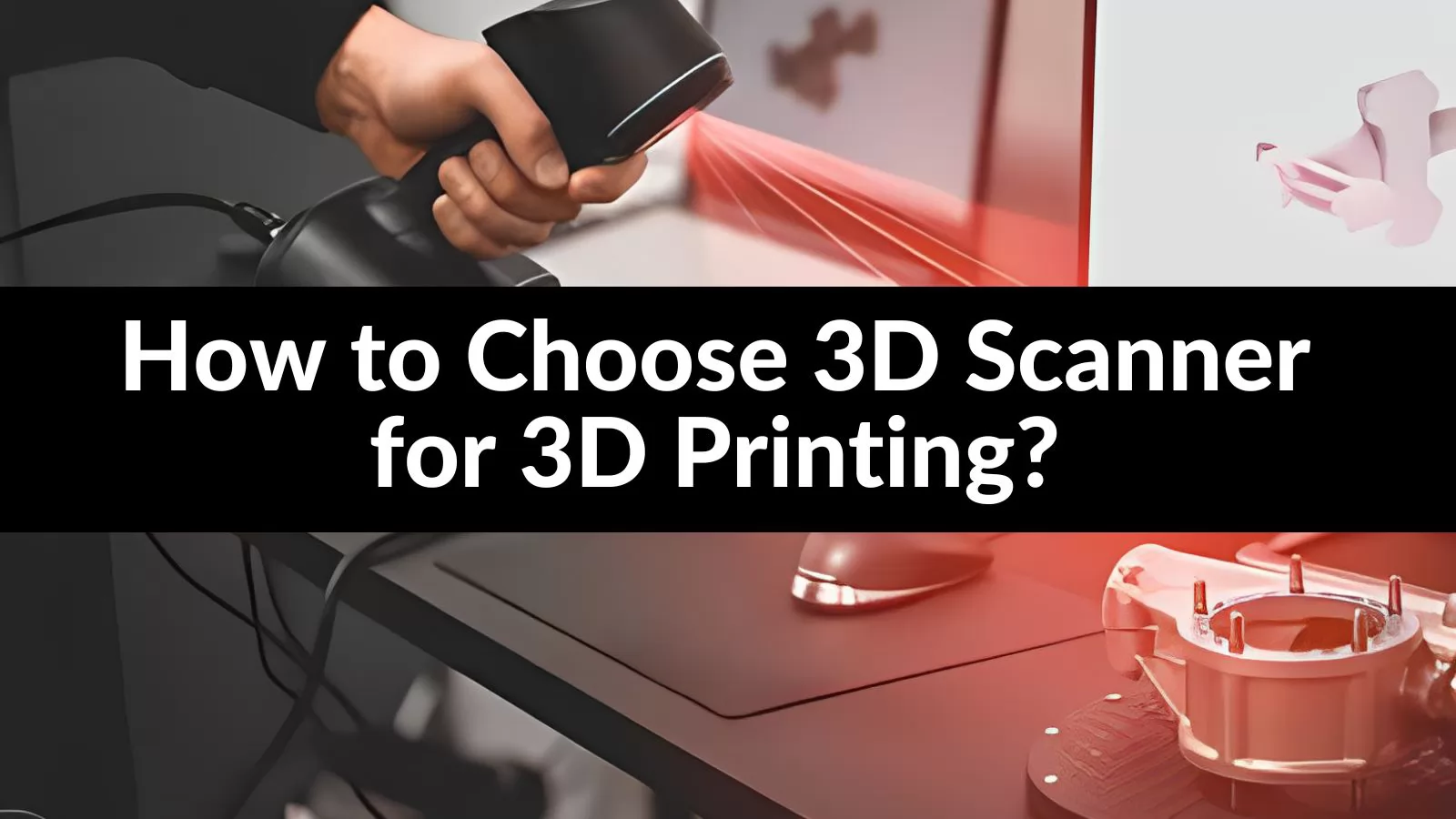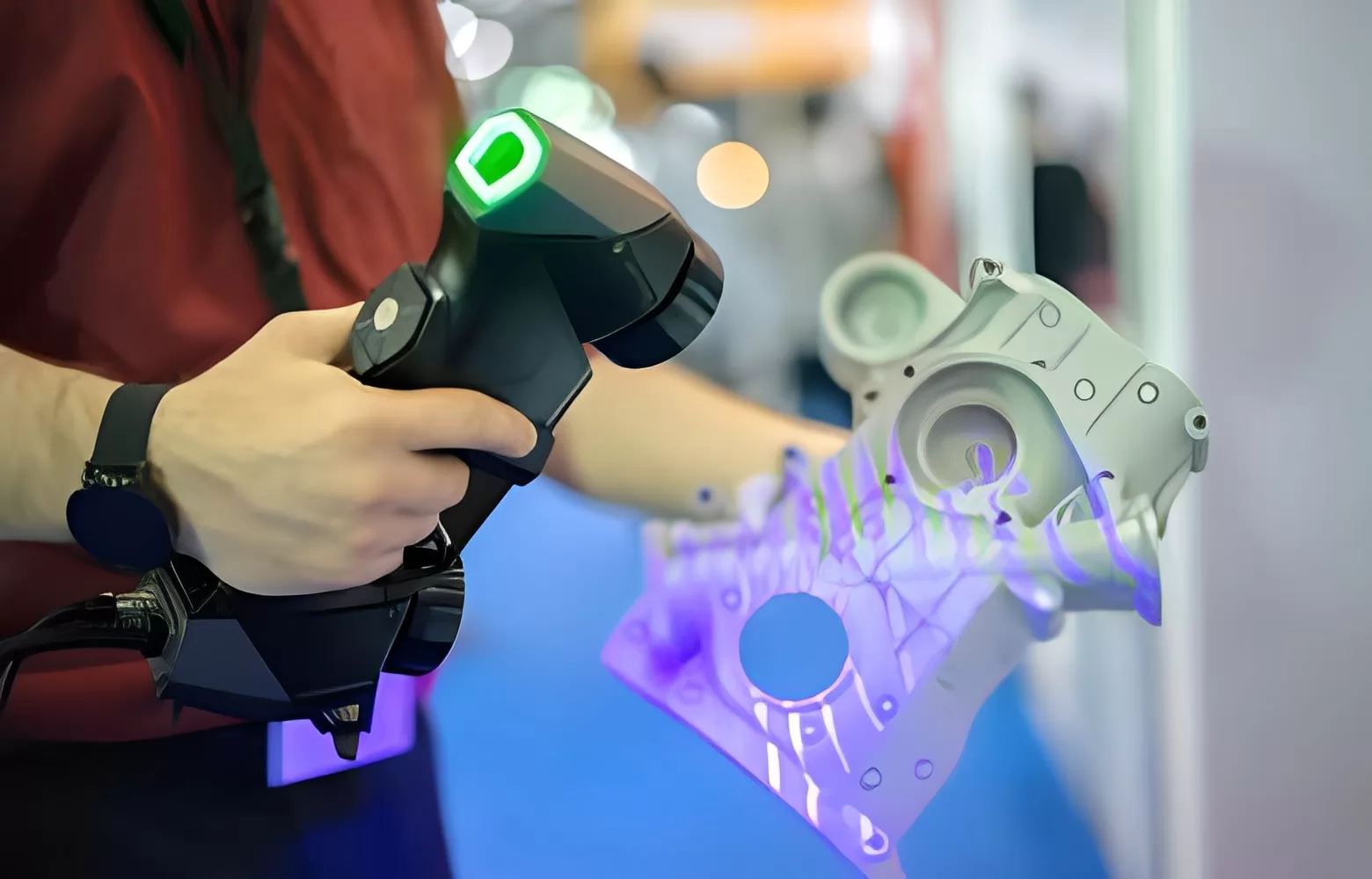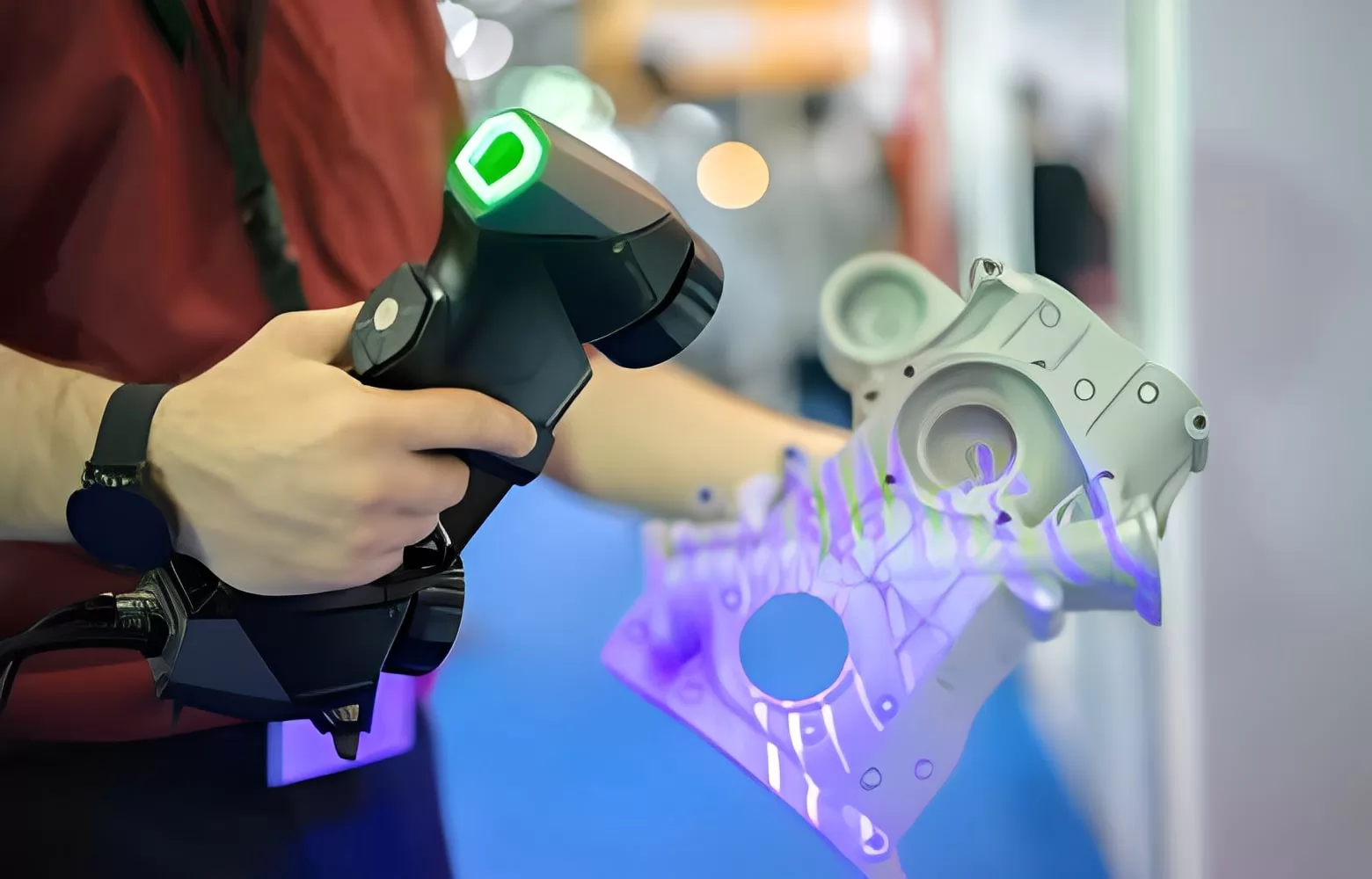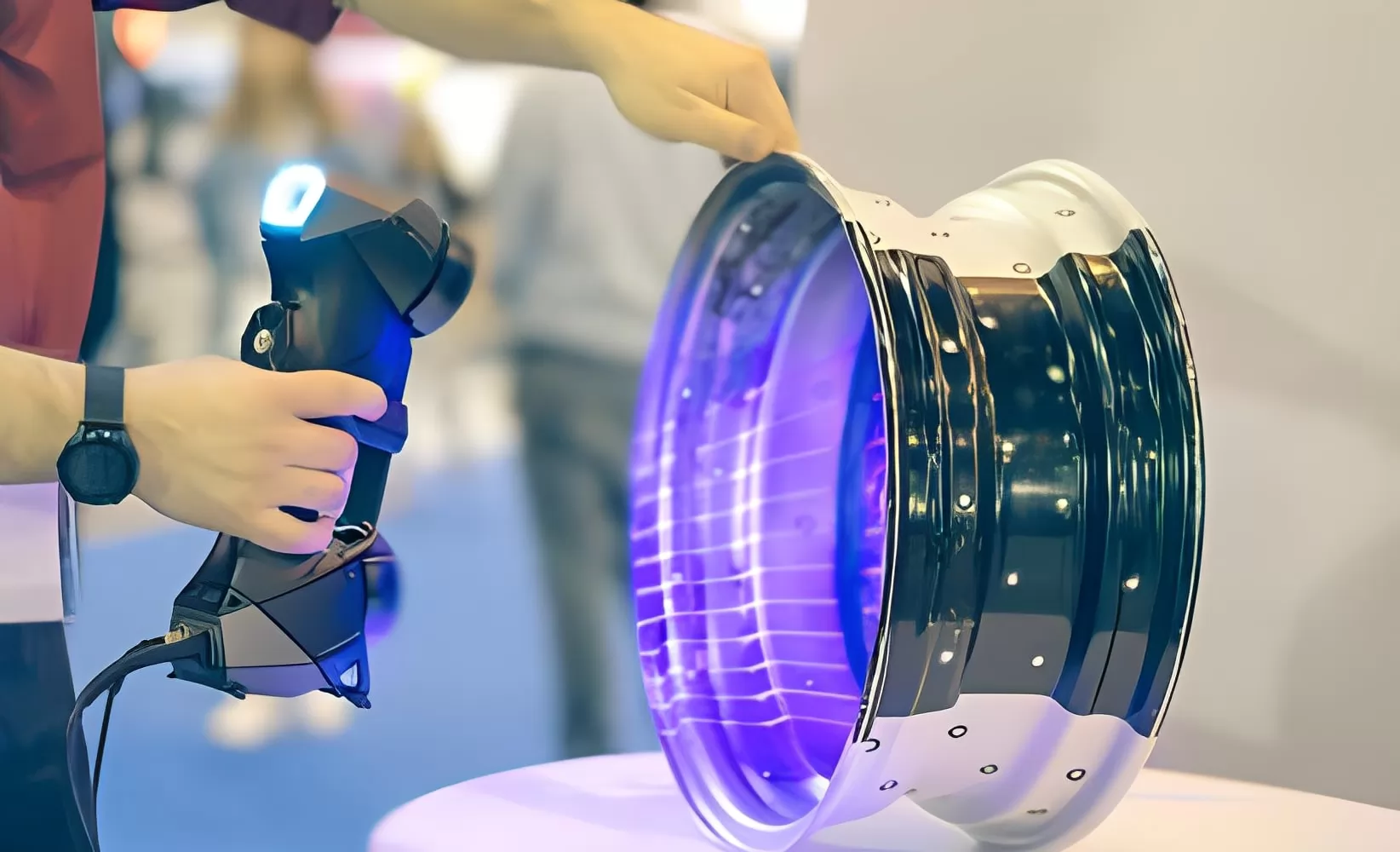
Choosing the right 3D scanner for 3D printing is a vital step in ensuring the quality and accuracy of your printed models. With the variety of options available on the market, it’s essential to understand the key factors that can influence your decision. This guide aims to provide a concise overview of these considerations, including resolution, accuracy, compatibility with your 3D printer, and budget constraints. By focusing on these aspects, you can select a 3D scanner that meets your specific needs and enhances your 3D printing projects.
3D Printing With 3D Scanning: Workflow
Step 1: Object Selection
- Choose the physical object that you want to replicate using 3D printing. Consider the object’s size, complexity, and the level of detail required.
Step 2: Select the 3D Scanning Technology
- Decide whether to use a laser 3D scanner or a structured light 3D scanner based on your accuracy requirements.
- Laser scanners are ideal for capturing fine details.
- Structured light scanners are suitable for rapid scanning of larger objects.
Step 3: Scanning the Object
- Use the chosen 3D scanner to capture the precise geometrical data of the physical object.
- Ensure that you cover the entire object’s surface to create a complete 3D digital representation.
Step 4: Data Processing
- Process the acquired 3D data to optimize it for 3D printing.
- Adjust the resolution of the model to meet the specific detail requirements of the final print.
- Higher resolution is needed for intricate designs, while lower resolutions may suffice for larger, less detailed objects.
Step 5: Software Usage
- Utilize user-friendly scanning and processing software with intuitive interfaces.
- Make use of data visualization tools within the software to assess and make adjustments to the 3D model.
Step 6: Color Enhancement (Optional)
- If desired, incorporate color enhancement capabilities to add realistic color textures to the 3D model based on data captured from the original object.
Step 7: Scanner Operation Mode
- Choose the scanner operation mode: manual, semi-automated, or automated.
- Automated systems are beneficial for scanning large volumes or extensive areas, as they reduce manual intervention and save time.
Step 8: Equipment Selection
- Properly select the 3D scanning equipment based on factors such as cost, volume coverage, and specific project needs.
- Ensure that the chosen equipment aligns with your workflow requirements.
Step 9: Transition to 3D Printing
- Once the 3D model is processed and ready, transfer it to the 3D printing software.
- Configure the 3D printer settings to match the requirements of the 3D model.
Step 10: 3D Printing
- Start the 3D printing process to recreate the physical object based on the 3D model.
- Monitor the printing progress and quality to ensure a successful outcome.
Step 11: Post-Processing (if necessary)
- After 3D printing is complete, perform any post-processing tasks such as sanding, painting, or assembly to refine the printed object.
Step 12: Final Inspection
- Inspect the 3D-printed object to ensure it matches the original object’s specifications and quality.
What to Consider When Choosing a 3D Scanner for 3D Printing
|
Consideration |
Description |
|---|---|
| Accuracy | Choose between laser or structured light scanners based on the level of detail required. |
| Resolution | Higher resolution scanners capture more detail, suitable for complex or intricate designs. |
| Ease of Use | User-friendly scanners save time and reduce potential frustrations during setup and operation. |
| Data Visualization | Good data visualization tools ensure accurate conversion of physical objects into digital models. |
| Color Enhancement | Scanners with color enhancement features are essential for projects requiring accurate color replication. |
| Versatility | Consider whether the scanner can adapt to different scanning needs and offers manual or automated modes. |
| Cost | Evaluate upfront costs and potential long-term expenses, including software subscriptions and accessories. |
| Volume and Coverage | Ensure the scanner’s volume and coverage area match the size range of objects you intend to print. |
Accuracy in 3D Scanning: Laser vs. Structured Light 3D Scanners
Achieving high levels of accuracy is paramount when selecting a 3D scanner for 3D printing applications. The fidelity of the final print is directly influenced by the precision of the initial scan, making it essential to understand the capabilities and limitations of two primary types of scanners: laser and structured light.
Laser 3D scanners operate by emitting a laser beam towards the object and measuring the time it takes for the light to bounce back. This method, known for its pinpoint accuracy, excels in capturing fine details. Laser scanners are particularly effective on reflective or complex surfaces where precision is non-negotiable. However, they can struggle with capturing color and may require more time to perform a full scan due to their meticulous nature.
Structured light 3D scanners project a pattern of light onto the object and analyze how the pattern deforms upon contact with its surface. This technology tends to be faster than laser scanning, offering an efficient balance between speed and accuracy. Structured light scanners are adept at capturing not only shape but also surface textures and colors, making them ideal for applications requiring detailed color reproduction.
Both technologies have their place in 3D scanning for printing; choosing between them involves weighing factors such as the level of detail required, object size, and whether color accuracy is crucial. For instance, historical artifact reproduction might benefit from the high-fidelity scans produced by laser technology, while structured light scanning could be preferred for quickly capturing detailed prototypes needing color information.
Resolution
Resolution is a critical factor to consider when choosing a 3D scanner for 3D printing applications. It essentially determines the level of detail that the scanner can capture. High-resolution scanners are capable of detecting very small features, making them ideal for intricate models where precision is paramount. The resolution of a 3D scanner is usually measured in microns (µm), with a lower micron value indicating higher resolution.
It’s important to note that the required resolution depends on the specifics of your project. For projects where fine details are crucial, such as in the creation of dental implants or jewelry, opting for a scanner with the highest possible resolution would be beneficial. On the other hand, for larger, less detailed objects like automotive parts or furniture components, a lower resolution may suffice.
Selecting a 3D scanner with adjustable resolution settings offers flexibility across various projects, allowing users to balance detail and scanning speed according to their current needs. However, it should be kept in mind that higher-resolution scans can result in larger file sizes which might require more powerful computing resources to process and could also extend the duration of scanning sessions.
Ease of Use
When selecting a 3D scanner for 3D printing, considering how user-friendly and intuitive the device is becomes critical. This aspect, known as ease of use, is pivotal in ensuring that both novices and professionals can operate the scanner efficiently without extensive training or technical knowledge. Factors contributing to this include the software interface design, automation features, and general operational complexity.
Ease of use significantly influences productivity and quality. A scanner with an easy-to-navigate interface ensures that users spend less time grappling with controls and more time focusing on capturing precise data. Essential to this is the software’s ability to guide users through the scanning process with clear instructions and feedback. For scanners meant for diverse user groups, including educational institutions or hobbyists, this factor becomes even more crucial.
Moreover, some 3D scanners are equipped with automated functions to simplify workflows. These range from auto-aligning scanned fragments to optimizing scan settings based on the object’s characteristics, which allows users to achieve desirable outcomes even without in-depth technical expertise in 3D scanning technologies.
Data Visualization in 3D Scanning
Data visualization is a critical component in the process of 3D scanning, especially when preparing objects or environments for 3D printing. It involves the representation of data from a 3D scan in a form that is both visually comprehensible and detailed, facilitating the analysis and modification of the captured data before it is used for printing.
An effective data visualization tool within a 3D scanner software allows users to meticulously examine the surface details, dimensions, and potential flaws of the scanned object. This feature is vital for professionals who require precision, such as engineers, architects, and designers, enabling them to make informed adjustments or decisions based on the visualized data.
Moreover, data visualization capabilities can significantly impact the workflow efficiency. Users can quickly identify areas that need re-scanning or improvement, streamlining the preparation process for 3D printing. This level of detail and accessibility ensures that subsequent prints are accurate representations of the original object, with reduced errors and material wastage.
For those involved in art or historical preservation, data visualization aids in capturing not just structural but aesthetic details which are paramount. The ability to view textures, contours, and even colors (if supported by the scanner) adds an additional layer of complexity to reproductions.
Selecting a 3D scanner with superior data visualization features should be a priority for users aiming for high-quality prints. While considering other essential factors like accuracy, resolution, ease of use among others; understanding how well a scanner can visualize scanned data will significantly influence your outcomes in 3D printing projects.
Color Enhancement in 3D Scanning
Unlike other features that primarily impact the structure and geometry of a scanned object, color enhancement plays a crucial role in rendering the most accurate and visually striking replicas of original items. This feature is particularly significant when the end product’s aesthetic appeal is as important as its dimensional accuracy.
Color enhancement technology within 3D scanners ensures that colors captured are not only vibrant but also true to life. Without this capability, the final printed model might display washed-out or inaccurately represented hues, leading to a less authentic reproduction of the scanned object. For applications such as cultural heritage preservation, custom retail solutions, and detailed medical modeling, where color fidelity can be as critical as shape fidelity, investing in a scanner with superior color capturing and enhancement features is wise.
Scanners equipped with high-quality color sensors and advanced software algorithms can differentiate subtle shades and gradients on the surface of objects. These technologies work together to adjust brightness, contrast, and saturation levels automatically or with user intervention, resulting in prints that vividly mirror the original subject’s palette.
Professionals looking for a 3D scanner should assess how well different models handle color variability under various lighting conditions since some scanners may perform excellently in controlled lighting environments but falter in natural light settings. Evaluating examples of scanned objects or requesting demonstrations can give potential buyers confidence that their investment will meet both their structural and aesthetic requirements.

Versatility: Manual, Semi-automated, Automated
Versatility in the context of 3D scanners encompasses a range of operational modes that cater to diverse use cases and skill levels, including manual, semi-automated, and automated settings. Each mode offers distinct advantages depending on the project requirements and user expertise.
Manual 3D Scanners are typically handheld devices that require an operator to manually move the scanner around the object. This mode is highly flexible, allowing for detailed scanning of objects with complex geometries or hard-to-reach areas. However, it demands a steady hand and patience to ensure comprehensive coverage and may not always achieve consistent results due to human error.
Semi-Automated 3D Scanners strike a balance between manual control and automation. These systems might involve positioning aids or simple turntables that automate part of the scanning process while still requiring some manual intervention for optimal results. They are suitable for users looking for improved consistency over fully manual scanners without significantly increasing budgets.
Automated 3D Scanners are designed for efficiency and consistency. They are often fixed installations or use robotic arms to automatically scan an object from multiple angles with minimal human intervention. These systems are ideal for high-volume workflows where speed and repeatability are paramount. The primary trade-off is their higher cost compared to manual or semi-automated systems and potentially less flexibility in scanning unusually shaped or extremely large objects.
Choosing between these options involves considering factors such as the required level of detail (resolution), the time available for scanning each item, budget constraints, and whether the versatility to scan a wide variety of object sizes and shapes is crucial. For many businesses or enthusiasts, investing in a system that offers a blend of modes can provide the best return on investment by adapting to different projects’ needs over time.
Cost
The price spectrum of 3D scanners is broad, ranging from affordable consumer models to high-end professional equipment. A key consideration is how the cost ties directly to factors like accuracy, resolution, ease of use, versatility, and additional functionalities such as color enhancement and data visualization capabilities.
Entry-level 3D scanners often are more budget-friendly but might offer lower resolution and accuracy compared to their higher-end counterparts. These economical options could suffice for hobbyists or those requiring basic scanning tasks. On the other end, professional-grade scanners come with a heftier price tag, attributed to their superior precision, higher resolution, advanced features, and greater versatility in handling complex scanning projects. Such models are geared towards professionals needing detailed scans for intricate prints.
Beyond the initial purchase price, potential buyers should also consider ongoing costs which include maintenance, software updates—or subscriptions if applicable—and potential accessories needed to optimize performance or expand functionality.
In making a cost-effective purchase decision, evaluate not just the sticker price but how well the scanner meets your requirements without overpaying for unnecessary features. For businesses or serious enthusiasts where accuracy and detail are paramount, investing in a higher-quality scanner could prove economical in the long run by saving time and reducing the need for multiple scans or extensive post-processing.
Finding a middle ground that satisfies your technical demands while staying within budget ensures you obtain value without compromising on crucial aspects necessary for your 3D scanning and printing endeavors.
Volume and Coverage
The terms ‘volume’ and ‘coverage’ refer to the size and extent of the object that can be scanned by a 3D scanner. Understanding these parameters is vital, as they directly influence the type of projects you can undertake, affecting the versatility and utility of the scanner in your workflow.
The volume capacity of a 3D scanner defines the maximum dimensions an object can have to be fully captured in a single scan. This parameter is crucial for those looking to scan large objects or require precise details over expansive areas. Scanners with larger volume capacities are typically preferred in industries such as automotive, aerospace, and architecture, where large components are common.
Coverage, on the other hand, pertains to how much of an object’s surface area can be scanned from a single position or setup. Optimal coverage ensures comprehensive data collection across an object’s surface, minimizing blind spots and reducing the need for multiple scans from different angles. Scanners designed with wide coverage capabilities provide more efficient workflows by capturing detailed geometries in fewer passes, which is especially beneficial when dealing with complex shapes or intricate designs.
Choosing a 3D scanner with appropriate volume and coverage specifications requires an understanding of your specific needs. For small to medium-sized projects, compact scanners might suffice, offering convenience and portability at a lower cost. Larger or more complex applications may necessitate advanced scanners featuring extended range capabilities or sophisticated technology capable of delivering high accuracy over substantial volumes.
In Conclusion
In conclusion, selecting the right 3D scanner for 3D printing hinges on understanding your specific project requirements and balancing factors such as accuracy, speed, and budget.
Explore our range of 3D scanners to find the perfect match for your 3D printing needs. Contact us today to discuss how we can help turn your ideas into tangible realities with the right tools.





